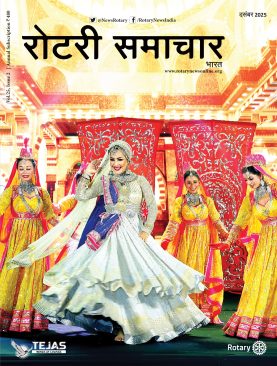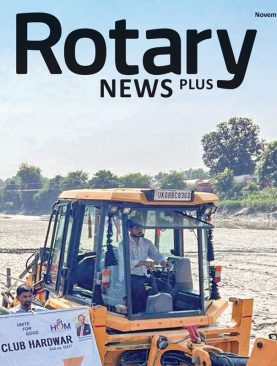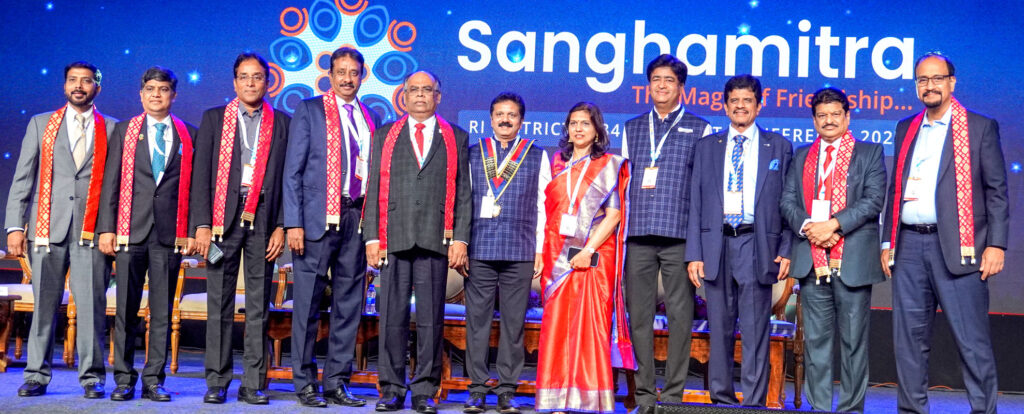It is up to the 1.4 million Rotarians to create the right impact in the world through service projects, the kind of new members they bring in, and showcasing our brand for the “magic of Rotary to happen,” said Trustee Ijeoma Pearl Okoro, RI president representative in her inaugural address at the RID 3234’s conference (discon) titled Sanghamitra — The magic of friendship in Chennai.

Rotary should be made irresistible by “making the club experience beautiful. Our strength lies in membership across 36,000 clubs in 515 RI districts spread over 34 zones in 200 countries and regions. Hence, we have to engage our members through meaningful activities,” she said. Also, there is a need to rope in Rotaractors into our Rotary projects and outreach efforts “for you can’t beat their energy and enthusiasm.” Now, Rotaract clubs will be able to expand their reach and impact by taking up global, district grant projects in a big way, she noted.
A member of RC Port Harcourt, RID 9141, Nigeria, she recalled her interaction with the late PDG Rekha Shetty and memories of her earlier visits to Chennai. “A discon is a time to learn and unlearn, make new friends, and celebrate the spirit of diversity.”
Addressing the conference DG N S Saravanan said that as governor, “I had never set a target, but started with the hope that our work and effort will make us proud in the future.” In just seven months, the district clubs have contributed over $1 million to TRF, and in other performance indices too “we are at the level mandated by RI,” he said. With a line-up of lively, stimulating sessions, good speakers and entertainment shows for two days, it is time to relax and enjoy the programmes, he said, and thanked discon chair Ravi Sundaresan and his team for “working tirelessly to put up this grand ensemble.”
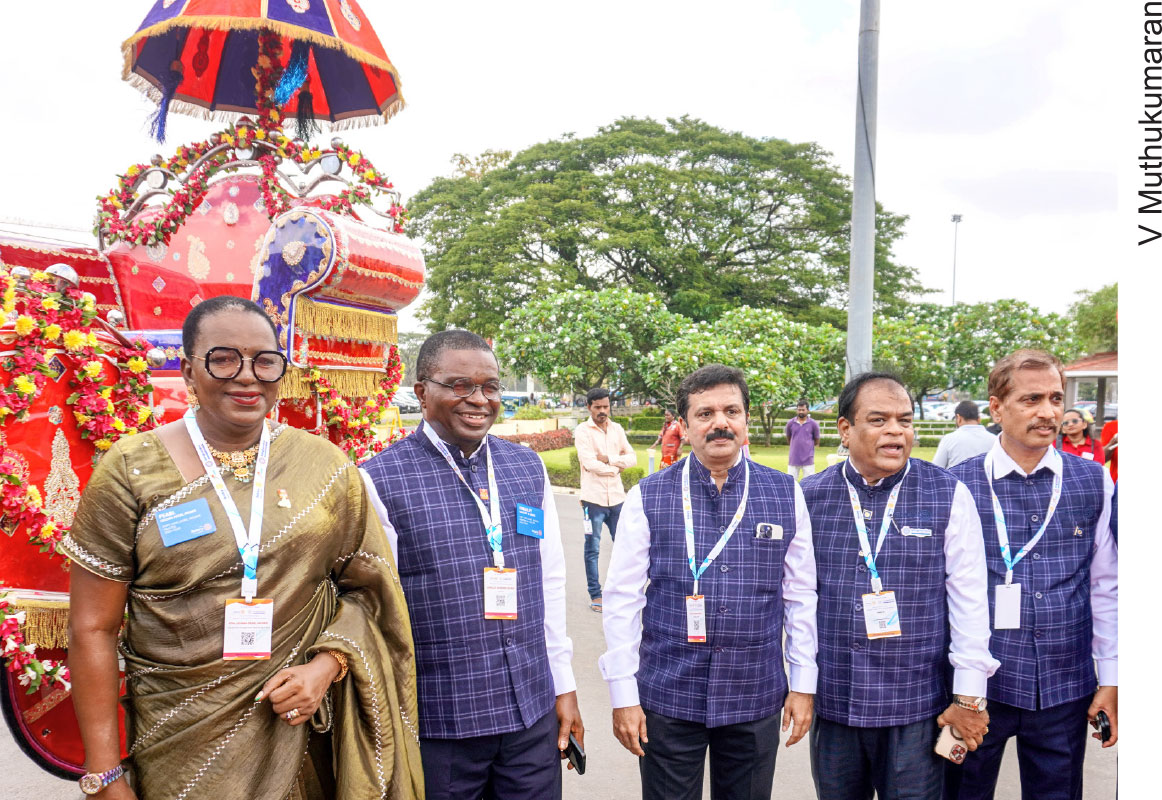
Network with other Rotarians and create new bonds of friendship which will help you to grow as a person, said PRID A S Venkatesh. “While you will enjoy listening to great speakers and celebrities, take time off to make new friends and widen your contact as that will broaden your vision,” he said. The maiden discon of RID 3234 in its charter year “is nothing short of an amazing show including the food that is simply awesome,” he said.
Speaking on the startup ecosystem, S Krishnan, secretary, ministry of electronics and information technology (MeitY), said higher educational institutes must take a leaf out of IIT-Madras whose IIT-M Research Park is incubating a number of startups led by “innovative entrepreneurs”.
Even if just one per cent of over two lakh students who join engineering colleges (government counselling) each year in Tamil Nadu alone, that is 2,000 youth, aspire to be entrepreneurs, “we can create a new ecosystem with enough facilities for incubators at higher institutes and places across India for the innovators to succeed. We need to facilitate startups to come out with new business models, create jobs and wealth.”
In the coming years, disruptive technologies like AI, semiconductors and deep tech will create a new paradigm in doing business. The digital economy which was less than six per cent of the GDP a few years ago, has crossed 13 per cent now, and poised to surpass 20 per cent by the turn of this decade, he said. The ease of doing business for startups is critical for their success, hence venture and risk capitalists have to help the entrepreneurs in setting up that ecosystem.
Our primary education is good by its very design, but the problem lies in the higher education with GER at 28.2 per cent.
— V Kamakoti, IIT-Madras director
Earlier, IIT-Madras director V Kamakoti speaking on the ‘Future of youth education’ said the schooling system in India is very good. “By its very design our primary education has built in ethical values in its core curriculum.” The children have integrated this school education in their formative years as part of their life, he said.
But the problem is in the Gross Enrolment Ratio which is at a pathetic 28.2 per cent; that is out of 100 students who complete school education in India, 72 of them never go to college at all. “To address this GER issue, we have set up over 2,000 Vidya Shakti centres in villages that serve as a digital bridge between poor students and the IIT faculty, students and alumni who interact with rural children in their mother tongue, and motivate them to scale up their aspirations in higher education,” he explained. IIT-Madras has opened up its programmes for all through its digital non-campus programmes like BS in Data Science; and Electronic Systems — both these courses are open to all irrespective of age and qualifications. But they have to pass an entrance test (ET) for which training is given by the IIT faculty and poor students can avail fee scholarships. At present around 46,000 students are enrolled in these two BS programmes.
India’s higher education must align with the 17 SDGs (sustainable development gaols) of UN, and “that can be done through democratisation of quality and affordable education. Youth must do fundamental work in emerging, critical sectors like AI, biotech, quantum computing, AML (adaptive machine learning) etc for India to become a tech superpower,” he added.
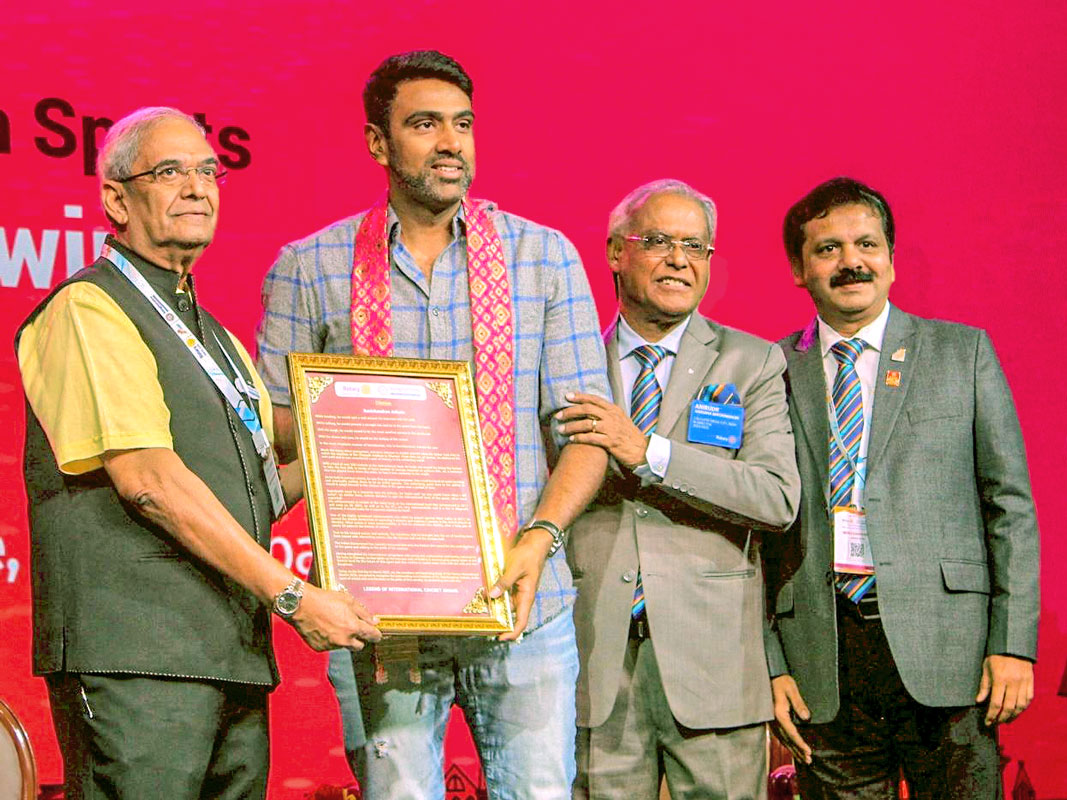
Recalling his journey in the IT industry, Infosys co-founder and Axilor Ventures chairman Kris Gopalakrishnan said the IT bellwether with revenue of $20 billion “has been profitable from day one, export driven and one of the top 10 software firms in the world.” Infosys is the first company in India to introduce ESOPs for its employees in the 1990s. The IT major has got the trust of all stakeholders which is critical for the firm’s success.
With $300 billion as revenue (including exports), the IT sector contributed seven per cent of India’s GDP, eight per cent of its total exports, and employed 5.5 million people, he said. “But we have to address the attrition issue which is over 20 per cent, and for which Infosys provides a special training to new staff at its Mysuru centre.” India has over 100 unicorns (startups with over $1 billion in valuation), it is the youngest nation with over 50 per cent of its population in the 20–35 age group, largest STEM talent pool, and access to latest knowledge tech and equipment… all of which will enable our workforce to create a new development model, new products and digital services for the eight billion people in the world.
However, for India to become a developed nation, “we need to increase its per capita income from the present $3,000 to over $15,000, and this is possible only if we transform from being consumers of products and technologies to producers of cutting-edge services, global brands by owning their intellectual properties, and investing heavily in R&D across sectors.” At present, India’s GDP is $4.3 trillion, the fifth largest economy after the US ($30 trillion), China ($19.5 trillion), Germany ($5 trillion) and Japan ($4.4 trillion).
Ashish Chauhan, CEO, National Stock Exchange, said that just as the people trust Indian parliament, judiciary and the politicians they elect, “they also trust our stock exchange, NSE, which has a market capitalisation of ₹380 lakh crore and 110 million investors across the country.” Even ordinary men have turned billionaires by investing through the NSE in blue chip companies, he said. The NSE is the fourth largest in terms of market cap after the bourses in the US, China and Japan. The middle-class investors trust the ability of Indian entrepreneurs to create wealth, and hence they buy shares of listed companies with potential for growth. “In the next 50 years, more wealth will be created than in the last 10,000 years and India as the youngest nation in the world, will be at the forefront of this surge in wealth.”
ACS Medical College and Hospital chancellor A C Shanmugam, Asia Engineering Company chairman Mahendra K Jain, Gopalakrishnan and Chauhan were presented with Rotary Lifetime Achievement Awards. On the next day, RI Director Anirudha Roychowdhury honoured cricketer R Ashwin with the same award for his record haul of over 500 wickets in international matches, and making the country proud with his artful spin bowling, winning matches for India, said the citation.
Rotary Village and Peace Park, designed by RC Madras East, at the House of Friendship displayed 16 digital bays for delegates to experience Rotary. Discon chairman Ravi Sundaresan, its mentor AVM Balasubramanian, PDGs Abirami Ramanathan, J Sridhar, district secretary Vidya Ragu and DGND Vijaya Bharathi spoke at the inaugural. Around 2,500 delegates, 700 Rotaractors, and 15 Rotarians from Ethiopia, Nigeria, Sri Lanka, Singapore and Malaysia participated.


